When it comes to designing or renovating bathrooms, choosing the right flooring is of utmost importance. Not only should it withstand moisture and humidity, but it should also create an elegant and stylish ambiance. If you are looking for a flooring option that can meet all these requirements and more, then bathroom ceramic tile flooring is the perfect choice. In this comprehensive guide, we will explore the benefits, types, installation process, care, and maintenance of ceramic tile flooring for bathrooms. Section 1: The Benefits of Bathroom Ceramic Tile Flooring Ceramic tile flooring offers numerous advantages that make it an ideal choice for bathrooms. By understanding these benefits, you will be able to make an informed decision about whether ceramic tile flooring is the right fit for your bathroom. 1.1 Durability: One of the primary reasons why ceramic tile flooring is so popular in bathrooms is its exceptional durability. It can withstand high traffic, moisture, and daily wear and tear, making it perfect for this high-moisture area. 1.2 Water Resistance: Ceramic tile flooring is naturally water-resistant, which is crucial in bathrooms where water spills and high humidity are common. It prevents moisture from seeping into the flooring and causing structural damage. 1.3 Aesthetic Appeal: With a wide range of colors, patterns, and textures available, ceramic tile flooring offers endless options to suit any design theme or personal preference. It can create a striking visual impact, enhancing the overall look and feel of your bathroom. 1.4 Low Maintenance: Maintaining ceramic tile flooring in the bathroom is a breeze. It only requires regular sweeping and occasional mopping to keep it clean and looking brand new. It is also resistant to stains and easy to spot-clean. Section 2: Types of Bathroom Ceramic Tile Flooring Now that we understand the benefits of ceramic tile flooring, let’s explore the different types available to help you choose the perfect one for your bathroom. 2.1 Porcelain Tile: Porcelain tile is one of the most popular choices for bathroom flooring due to its durability and water resistance. It is made from denser clays and fired at higher temperatures, making it less porous than other ceramic tiles. With its durability, it can withstand heavy foot traffic and is available in a variety of colors and finishes. 2.2 Natural Stone-Look Ceramic Tile: If you prefer the elegance and timeless beauty of natural stone but want a more affordable and low-maintenance alternative, natural stone-look ceramic tile flooring is an excellent choice. It replicates the look of marble, granite, slate, or limestone, providing a luxurious feel to your bathroom. 2.3 Mosaic Tile: Mosaic ceramic tile is perfect for adding a touch of creativity and visual interest to bathroom flooring. It is available in small, intricate patterns, allowing you to create stunning focal points or unique designs. Mosaic tile can also be combined with larger tiles to create a beautiful and personalized look. Section 3: Installing Bathroom Ceramic Tile Flooring Proper installation is crucial to ensure the longevity and performance of your bathroom ceramic tile flooring. r.

.
 While it is recommended to hire a professional for best results, it’s essential to understand the installation process to make informed decisions. 3.1 Surface Preparation: Before installing ceramic tile flooring, it’s important to prepare the surface adequately. This involves removing the existing flooring, repairing any uneven areas or cracks, and ensuring a clean and dry surface. Proper subfloor and underlayment should also be applied to prevent moisture damage. 3.2 Tile Layout and Pattern: Deciding on the tile layout and pattern is an important step in achieving the desired look for your bathroom. It is crucial to consider the size and shape of your bathroom and plan the layout accordingly. Popular patterns include grid, diagonal, herringbone, and basketweave. 3.3 Adhesive and Grout Application: Applying adhesive or thin-set mortar is necessary to secure the ceramic tiles to the floor. The adhesive is spread evenly using a notched trowel, and the tiles are carefully placed one by one. Once the tiles are in place, grout is applied to fill the gaps between tiles. After grouting, excess grout should be removed using a sponge or damp cloth. 3.4 Sealing: Sealing your bathroom ceramic tile flooring is recommended to enhance its water resistance and prevent staining. The grout lines should be sealed to protect against moisture penetration and make cleaning easie
While it is recommended to hire a professional for best results, it’s essential to understand the installation process to make informed decisions. 3.1 Surface Preparation: Before installing ceramic tile flooring, it’s important to prepare the surface adequately. This involves removing the existing flooring, repairing any uneven areas or cracks, and ensuring a clean and dry surface. Proper subfloor and underlayment should also be applied to prevent moisture damage. 3.2 Tile Layout and Pattern: Deciding on the tile layout and pattern is an important step in achieving the desired look for your bathroom. It is crucial to consider the size and shape of your bathroom and plan the layout accordingly. Popular patterns include grid, diagonal, herringbone, and basketweave. 3.3 Adhesive and Grout Application: Applying adhesive or thin-set mortar is necessary to secure the ceramic tiles to the floor. The adhesive is spread evenly using a notched trowel, and the tiles are carefully placed one by one. Once the tiles are in place, grout is applied to fill the gaps between tiles. After grouting, excess grout should be removed using a sponge or damp cloth. 3.4 Sealing: Sealing your bathroom ceramic tile flooring is recommended to enhance its water resistance and prevent staining. The grout lines should be sealed to protect against moisture penetration and make cleaning easie
..
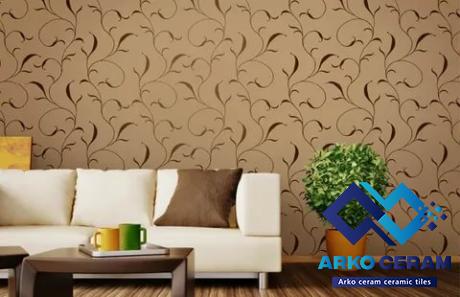 Section 4: Care and Maintenance of Bathroom Ceramic Tile Flooring To maintain the pristine condition of your bathroom ceramic tile flooring, regular care and maintenance are necessary. Here are some best practices to keep in mind: 4.1 Regular Cleaning: Sweeping or vacuuming your ceramic tile flooring regularly will help remove dirt and debris. Mopping with a mild detergent or specialized tile cleaner is also recommended to keep the tiles clean and free from stains. 4.2 Avoid Harsh Cleaners: Avoid using harsh chemicals, abrasive cleaners, or scouring pads that may damage the tile’s surface or grout. Stick to mild cleaning agents specifically designed for ceramic tiles. 4.3 Grout Maintenance: To keep the grout lines clean, apply grout sealer annually. Additionally, periodic deep cleaning of the grout using a grout cleaner and a small brush will help remove stubborn stains or discoloration. 4.4 Prevention Measures: Preventive measures such as using bathmats or rugs near water sources and promptly wiping away any spills or excess moisture will minimize the risk of stains and damage. Conclusion: Bathroom ceramic tile flooring offers a winning combination of durability, water resistance, beauty, and low maintenance. With its wide range of options, you can create a customized look that complements your bathroom design. By choosing the right type, following proper installation techniques, and implementing regular care and maintenance, ceramic tile flooring will continue to impress with its long-lasting appeal. So why wait? Transform your bathroom into a luxurious oasis with the timeless beauty of ceramic tile flooring today. Section 5: Common Questions and Concerns As you explore the world of bathroom ceramic tile flooring, you may come across some commonly asked questions and concerns
Section 4: Care and Maintenance of Bathroom Ceramic Tile Flooring To maintain the pristine condition of your bathroom ceramic tile flooring, regular care and maintenance are necessary. Here are some best practices to keep in mind: 4.1 Regular Cleaning: Sweeping or vacuuming your ceramic tile flooring regularly will help remove dirt and debris. Mopping with a mild detergent or specialized tile cleaner is also recommended to keep the tiles clean and free from stains. 4.2 Avoid Harsh Cleaners: Avoid using harsh chemicals, abrasive cleaners, or scouring pads that may damage the tile’s surface or grout. Stick to mild cleaning agents specifically designed for ceramic tiles. 4.3 Grout Maintenance: To keep the grout lines clean, apply grout sealer annually. Additionally, periodic deep cleaning of the grout using a grout cleaner and a small brush will help remove stubborn stains or discoloration. 4.4 Prevention Measures: Preventive measures such as using bathmats or rugs near water sources and promptly wiping away any spills or excess moisture will minimize the risk of stains and damage. Conclusion: Bathroom ceramic tile flooring offers a winning combination of durability, water resistance, beauty, and low maintenance. With its wide range of options, you can create a customized look that complements your bathroom design. By choosing the right type, following proper installation techniques, and implementing regular care and maintenance, ceramic tile flooring will continue to impress with its long-lasting appeal. So why wait? Transform your bathroom into a luxurious oasis with the timeless beauty of ceramic tile flooring today. Section 5: Common Questions and Concerns As you explore the world of bathroom ceramic tile flooring, you may come across some commonly asked questions and concerns
…
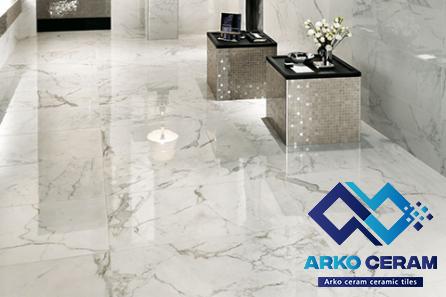 . Here, we address a few of them to provide clarity and ease any worries you might have. 5.1 Is ceramic tile flooring slippery when wet? Ceramic tile flooring can be slippery when wet, especially if it has a smooth and polished surface. However, this concern can be easily mitigated by choosing tiles with a textured or matte finish, which offer better slip resistance. Additionally, using rugs or mats near water sources and ensuring that spills are promptly cleaned can help reduce the risk of slipping. 5.2 Can ceramic tiles crack or break easily? While ceramic tiles are known for their durability, they can crack or break under extreme force or impact. However, with proper installation and maintenance, the chances of this happening are minimal. Avoid dropping heavy objects onto the tiles, and if necessary, use furniture pads to prevent scratching or cracking caused by furniture movement. 5.3 Can bathroom ceramic tile flooring be installed over existing flooring? In most cases, bathroom ceramic tile flooring can be installed over existing flooring, provided that the surface is sturdy, even, and properly prepared. However, it is best to consult with a professional to ensure that the existing flooring is suitable for this type of installation. The height of the new floor should also be taken into consideration, as it may affect door clearance and other fixtures.
. Here, we address a few of them to provide clarity and ease any worries you might have. 5.1 Is ceramic tile flooring slippery when wet? Ceramic tile flooring can be slippery when wet, especially if it has a smooth and polished surface. However, this concern can be easily mitigated by choosing tiles with a textured or matte finish, which offer better slip resistance. Additionally, using rugs or mats near water sources and ensuring that spills are promptly cleaned can help reduce the risk of slipping. 5.2 Can ceramic tiles crack or break easily? While ceramic tiles are known for their durability, they can crack or break under extreme force or impact. However, with proper installation and maintenance, the chances of this happening are minimal. Avoid dropping heavy objects onto the tiles, and if necessary, use furniture pads to prevent scratching or cracking caused by furniture movement. 5.3 Can bathroom ceramic tile flooring be installed over existing flooring? In most cases, bathroom ceramic tile flooring can be installed over existing flooring, provided that the surface is sturdy, even, and properly prepared. However, it is best to consult with a professional to ensure that the existing flooring is suitable for this type of installation. The height of the new floor should also be taken into consideration, as it may affect door clearance and other fixtures.

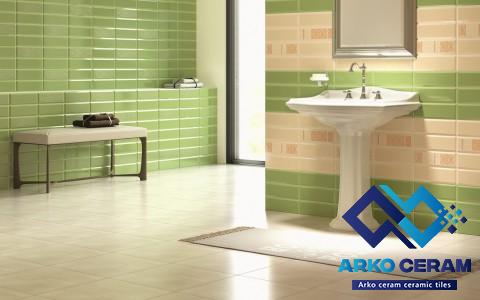
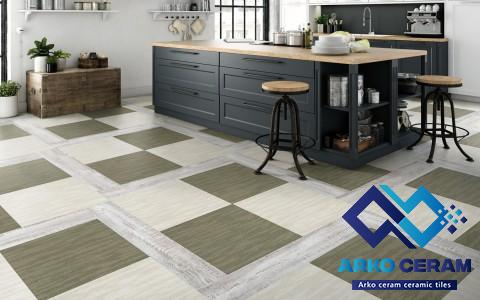
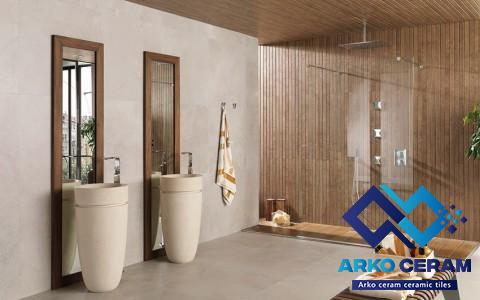




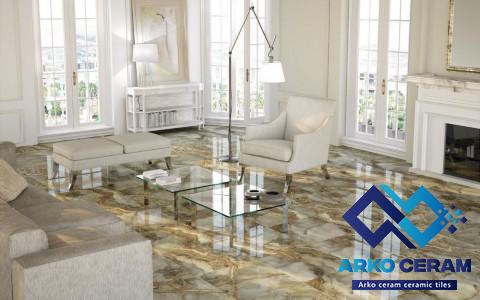


Your comment submitted.